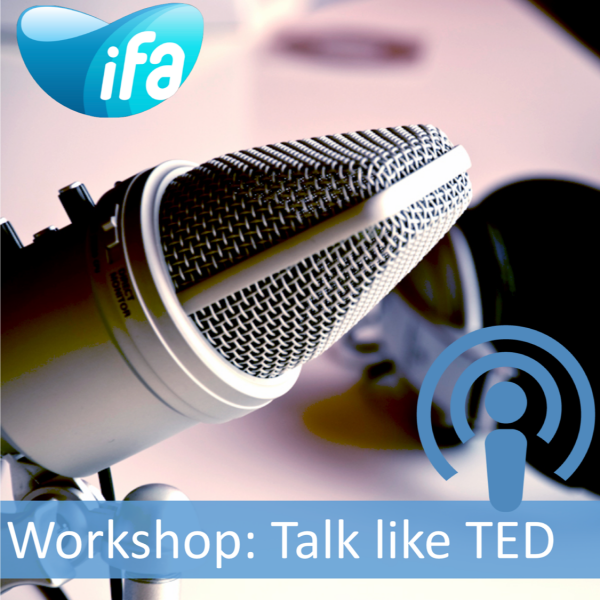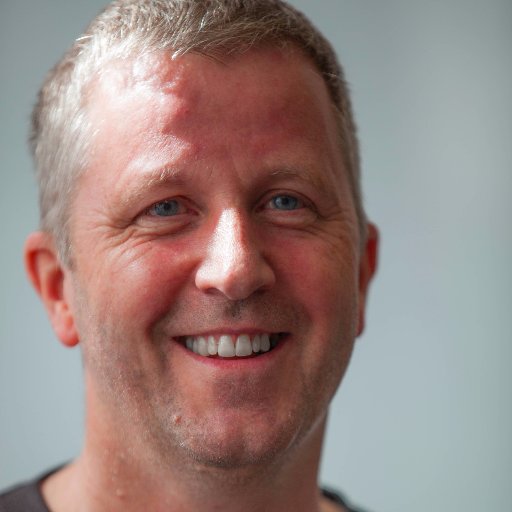
Workshop on How to talk like TED? (#IFAD2018)
Learn how to talk like TED by Rosh Fisher
2nd How to talk like TED workshop, made easy for everyone (Limited places during IFAD2018)
Date: November 24th, 2018, 9:00-12:10
Location: VU Medical Centre, De Boelelaan 1117, 1081 HV Amsterdam
Room: ZH 2E14 De Ijssel
Program Chair: Ross Fisher
Speakers:
- Dr Ross Fisher, Surgeon in Sheffield, United Kingdom. I'm a Consultant Paediatric Surgeon at Sheffield Children's Hospital specialising in Surgical Oncology, Neonatal Surgery and Trauma. My alter ego @ffolliet spends a lot of time thinking about #presentationskills and the challenge to develop creative and engaging presentations. Work: Sheffield Children's Hospital, Sheffield UK. Education: George Watson's College, Edinburgh, University of Sheffield Medical School
- Watch Introduction by Ross Folliet given during the 1st How to take like TED workshop, during #IFAD2017 in Antwerrp: https://vimeo.com/250253312, and watch all presentation here: https://vimeopro.com/user34777304/2017-thursday-hope/video/250253442

Duration: half day
Pax: 25
Price: 100 EUR
Comment: This workshop can be booked as post-IFAD2018 symposium after attending the 7th IFAD or as stand-alone.
Background:
TED stands for Technology, Education and Design. TED's early emphasis was technology and design, consistent with its Silicon Valley origins, but it has since broadened its focus to include talks on many scientific, cultural, and academic (medical, TEDmed) topics.
Learning objective: This workshop will outline the basic principles on how to give a talk in a TED-like manner. Learn to deliver knowledge regarding the science of presentations and why they currently fail. Objective is to stimulate change and improve knowledge transfer
Facts are not enough. Ignatz Semmelweiss discovered the cause of death in the labour ward in Vienna. His research proved that many lives could be saved. He presented this at multiple meetings but many lives continued to be lost, not because he didn't put in the effort, not because his science was flawed but because of the way he delivered information. Your science alone will not persuade your audience. The nature of construction and delivery of virtually every single scientific presentation precludes knowledge transfer. The science behind that is clear, yet ignored. Come to this workshop to understand the reasons that presentations fail, learn simple techniques that will improve presentations and change the world with your research.
Draft scientific program:
| 8:00 AM | 9:00 AM | Welcome Coffee | |
| 9:00 AM | 9:15 AM | Ross Fisher | Introduction |
| 9:15 AM | 10:30 AM | Ross Fisher | Module 1 |
| 10:50 AM | 12:10 PM | Ross Fisher | Module 2 |
| 12:10 PM | 13:00 PM | Lunch Break |
Suggested reading:
- TED-style checklist to master your next presentation
- Nine secrets on how to talk like TED by Social Zebras
- Chris Anderson. TED's secret to great public speaking
- There's no single formula for a great talk, but there is a secret ingredient that all the best ones have in common. TED Curator Chris Anderson shares this secret — along with four ways to make it work for you. Do you have what it takes to share an idea worth spreading?
- Chris Anderson. How to give a killer presentation: https://hbr.org/2013/06/how-to-give-a-killer-presentation
- Andrea Stewart. Public speaking: top tips to deliver a presentation with impact. https://www.admin.ox.ac.uk/media/global/wwwadminoxacuk/localsites/uashomepages/uasconference/presentations/Public_speaking_-_top_tips_to_deliver_a_presentation_with_impact.pdf
- Carmine Gallo. Talk Like TED: The 9 Public-Speaking Secrets of the World's Top Minds. http://gallocommunications.com/books/talk-like-ted-2/
- Recent artcile from St Emlyns' blog is presented below: http://www.stemlynsblog.org/ross-fisher-on-p3-presentations-ffolliet-com/
Click here for ffolliet.com (Ed – don’t forget to subscribe)
In Medicine we all like to believe our practice is evidence based, effectual and evolves with time and feedback. In the light of ever progressing scientific literature and #FOAMed we make changes to management strategies, review our results and endeavour to remain at the cutting edge. The same cannot be said for the majority of medical presentations.
Most presentations directly contradict well established psychological principles, are of the same mediocre quality as those around them and are ineffectual. A good presentation is remarked upon at a conference rather than expected. Worse than this, our colleagues aspire to this level of mediocrity. Our presentation style is not evidence based, not effectual and despite time and feedback has failed to evolve.
A presentation is made up of three parts; a presentation STORY (p1), a presentation MEDIA (p2) and a presentation DELIVERY (p3). The first, p1, is the facts, data, information, teaching or message that the presenter intends for the audience to receive. The second, p2, is the slideset constructed as supportive media for the p1 and shown, as the third, p3, is delivered on the day. Together, these three parts make up the whole, the presentation. The value of the presentation can be seen mathematically as the product of the three parts, (p cubed) each contributing to the whole.
A standard presentation is constructed by a speaker entering the data directly into the presentation software. This represents the totality of the message and the script delivered on the day. Thus p2 is the principal factor in the presentation. Effectively p2 = the p cubed value. There is more to a presentation than simply the slideset.
The psychological literature is clear on the flaws in such an approach. Kosslyn
identified a multitude of psychological principles that the typical powerpoint transgresses. The most obvious issue is that auditory and visual input are processed in separate parts of the brain and a standard powerpoint where the audience attempts to read, listen, think and even write leads to cognitive overload. The audience will prioritise one input at the expense of another. Simple studies of data retention clearly show the superiority of illustrative (images) over annotative (wordy) p2 media. Illustrative presentations allow an audience to focus on the spoken message, giving space for cognition.
It’s not just about the slides though. Many presentations are simply a recitation of facts, the effectiveness of which is minimal. Presenters must consider the needs of the audience and construct a message that addresses this rather than attempting to “cover” an entire topic. Recitation is neither engaging nor memorable as a style of delivery p3. The whole construct limits the value of a presentation to the audience.
The need for change is clear to maximise the potential of presentations and the time of the audience. We need to change the way we construct presentations. The p1 should be derived from exploring, understanding and meeting the specific needs of the audience. The p2 must be designed to facilitate greater understanding: its purpose is illustrative. This will necessarily offer opportunities in change of the delivery of the piece.
Is such investment worthy of time and effort? I would argue, yes. It’s clear to anyone attending conferences that the status quo at many conferences is dire, delegates are tired of poorly presented, text based, unrehearsed monotony. There are exceptions of course; SMACC, RCEM and TEDx have embraced new styles of presentations and are creating a movement where the difference in approach is hugely valued. This change is evidence based, clearly effectual and continuing to evolve. It is available to all who would seek change but, as with all skills, requires a degree of insight and coaching.
Since March 2013 I used the blog at presentationskills.blogspot.com to share and develop the ideas behind p cubed presentations using simple, three to four paragraph posts to address diverse aspects of presentations. It allowed me to meet and engage with a community who share my desire to make learning better. This and my other interests as a paediatric surgeon led to opportunities to speak, run workshops and study across the globe. I’ve joined St.Emlyn’s
and will continue to contribute to this fabulous team. I’ve spoken on the main stage at SMACC
and spent some wonderful times with the Teaching course in the US and Australia. What started as a personal journey has grown into something much bigger and with more impact than I could ever have envisaged.
The time has come to take #presentionskills to the next level with a new website.
http://prezentationskills.blogspot is now http://ffolliet.com
The site has a more defined structure allowing visitors to read posts grouped according to broader topics.
- the science of fail
- #htdap (how to do a presentation)
- p cubed
- p1 + p2 + p3
- and the real privilege of guest bloggers reporting their own experiences
The new site will continue to post interesting ideas, but will allow more discussion, questions and ideas to develop on a more interactive platform.
Thanks once again to everyone who has been part of this so far and in the future. Come visit, subscribe and join the conversation. Together, we can all make our presentations better.
Ross aka @ffolliet

